Why is Punjab, a land of sublime classical music, known only for bhangra?
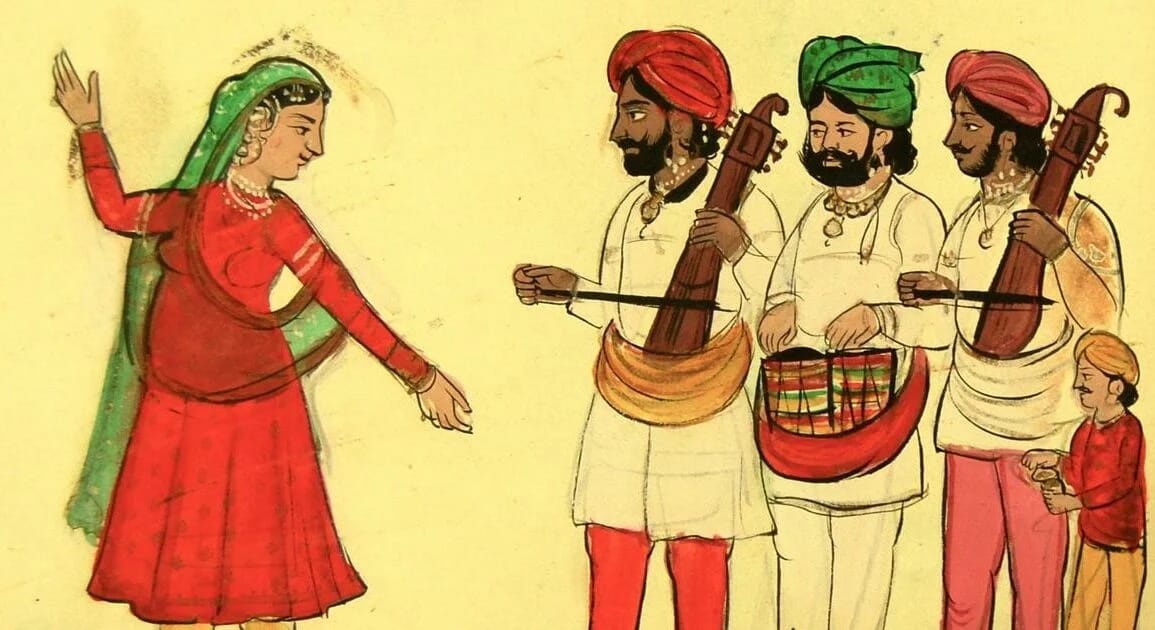
It hosts India’s oldest classical music festival, the Harballabh Sangeet Sammelan, and is home to at least two gharanas of vocal music and one of percussive music. It is the birthplace of some of the biggest icons of the Hindustani form. Its sacred music is rooted in dhrupad and even its folk tunes carry the whiff of ragdari. Yet, in popular discourse, Punjab’s music remains stuck in entrenched cliches – rustic, balle balle and Bollywood bhangra. In short, the farthest you can get from sophisticated art music.
An anecdote from musician-writer Sheila Dhar’s 2005 memoir Raga’n Josh illustrates this skew. In it, Dhar’s father, an elite patron of the arts, is conversing with the legendary Hindustani vocalist Kesarbai Kerkar:
“Isn’t this place, Harballabh in the Punjab, in Jullundur of all places?’ my father had asked patronizingly, as though serious music and Punjab were incompatible…. ‘I could never have imagined how sensitive and sophisticated the musical tastes of the regular listeners at this festival are. And most of them are Punjabis,’ Kesarbai had said with the air of someone who has witnessed a miracle.”
It was the quest to undo this one-note stereotype and unpack the rich, eclectic and intertwined musical traditions of colonial Punjab that drove historian Radha Kapuria’s research. Her findings, presented in the recently published book Music in Colonial Punjab: Courtesans, Bards and Connoisseurs, 1800-1947, make for an engrossing read.
The book traverses a fascinating arc of social, political and cultural shifts in Punjab over 150 years. It begins at the cosmopolitan durbar of Maharaja Ranjit Singh, spans the colonial and missionary interface with the region’s music, covers the onslaught of the anti-nautch brigade as well as the rise of the princely states as thriving cultural hubs, and culminates at the eve of Partition.
It is this last event, along with the colonial representation of the region, that Kapuria believes caused much of our “collective amnesia” about Punjab’s legacy. “I think this amplified folk image is a legacy of Partition, the loss of Lahore [for Indian Punjabis] and the memory of it as a cultural centre,” said Kapuria, assistant professor in South Asian history at Durham University. “The migration and displacement of 1947 also took the largest number of musicians, who were Muslim, across the border. Ragadari music was no longer seen as Punjab’s repository, especially for Punjabis in India. There was also the British colonial impression of Punjab as a rural, agrarian idyll, which has superseded our memory of classical music in the region.”
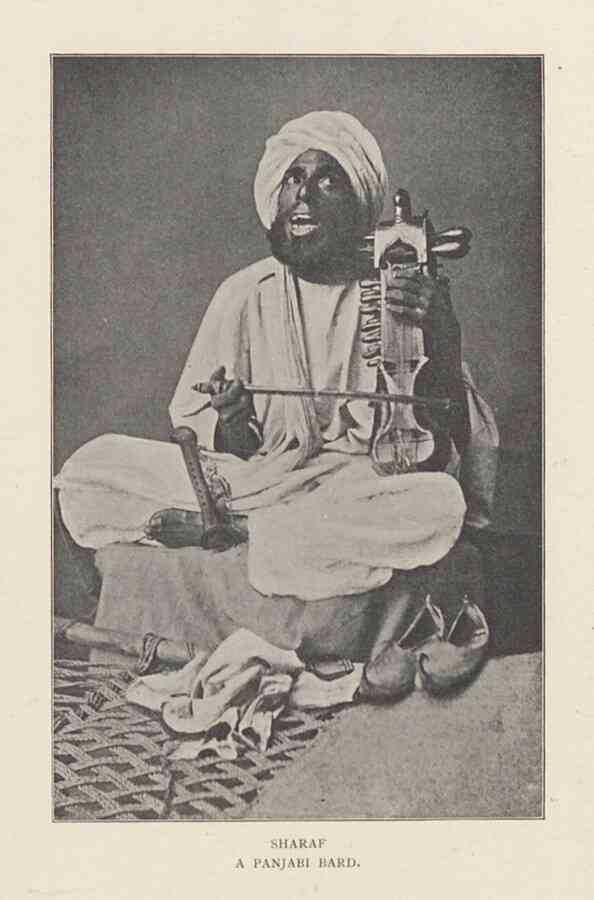
The cliche of Punjab as an agrarian and militaristic region worked well for the colonial cause but it blurred our view of its cultural reality: that at one time, in not too distant past, it had been home to a robust classical music system which not only withstood and evolved through many upheavals but also remained an all-pervasive presence in the lives of its people. To understand this culture at its peak, we need to go back to the 18th-century darbar of Maharaja Ranjit Singh that Kapuria reconstructs vividly in her book.
Quotidian and the courtly
Ranjit Singh’s court at Lahore was a lively hub of arts patronage, home to courtesans and musicians who were accomplished, prized and powerful, and whose role at the court was mandated in royal protocols. Singh’s own wives included courtesans, and the legend of his love for one Bibi Moran has been immortalised in a bridge built in her name Pul Kanjri (dancing girl) on the Amritsar-Lahore road. There was also his famous battalion of “Amazonian” dancers – armed courtesans who performed for foreign dignitaries.
Mostly known as an outstanding military strategist, the Sikh ruler was a passionate patron of the arts, according to Kapuria’s book. Chronicles speak of his addiction to the flute music of one Attar Khan and the accolades he piled on dhrupadiya Behram Khan – the founder of the Dagar clan – who was given the title Allama Abul-Awan-e-Arbab-e-Ilm-e-Mousiqui, Shat-Shastri, Svar-Guru, Brahaspati, Patal Shes Akash-Indra, Prithvi Mandalik (in brief, the all-knowing). From Punjab, Behram Khan later migrated to Jaipur court and trained the female vocalist Goki Bai, who tutored Patiala gharana’s awesome twosome, Ali Baksh and Fateh Ali, popularly known as Aliya-Fattu.
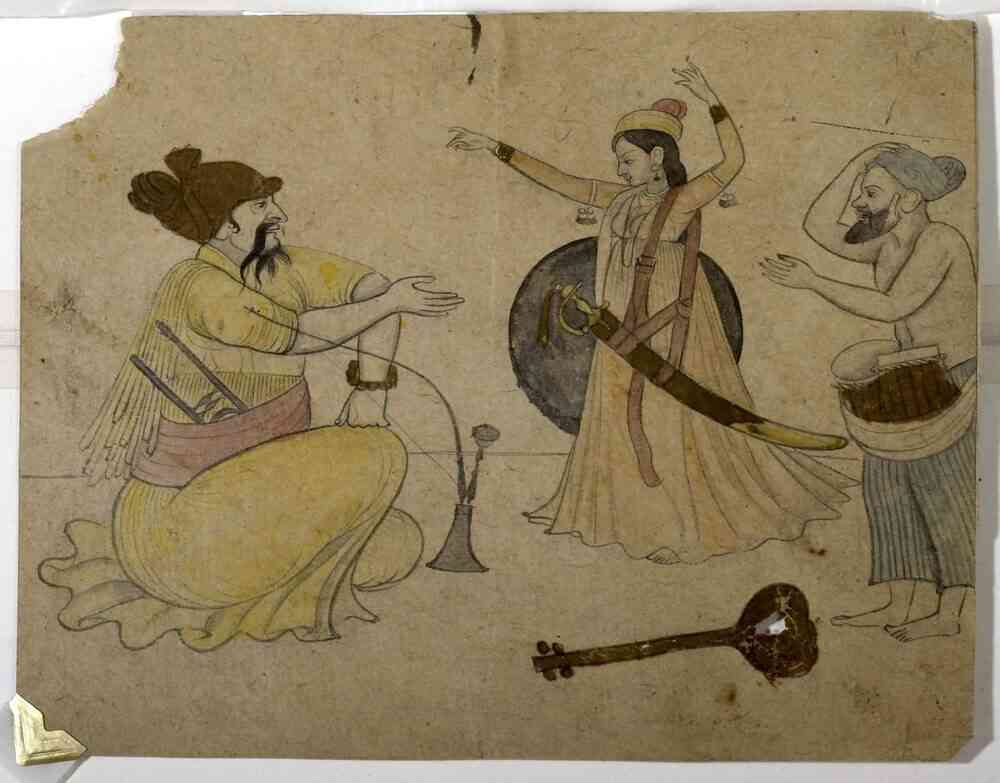
The royal patronage from Ranjit Singh ensured employment, gifts and grants to hereditary musicians and dancers across the kingdom. His even-handed munificence meant that music of all colours flourished under his rule. What we now define as classical music came to be performed “in spaces associated with folk, qawwali, gurbani, melas at Sufi shrines,” says Kapuria in her book.
There is enough evidence of this mingling of the classical and the common: the spiritual kafis of the Sufi poet Bulleh Shah, the raga Bhairavi that marks the singing of the legend of Heer Ranjha, and the gurmat sangeet of the gurdwaras with its unique raga-taal repertoire and distinct instruments of accompaniment.
“It is what I refer to as striated musical publics, audiences were more catholic than we imagine when we talk of classical music,” said the author. “Ragadari is certainly an elite genre but there was a strong sense of it among the common people of Punjab. There is the oft-repeated story about common and diverse people thronging the Harballabh festival which began in 1875, the rural audiences who have an unerring ear for music. We also have documents about the common people, but also traditional practitioners like mirasis, courtesans attending the festival in the late 19th and early 20th centuries.”
Above all, the bridge between the quotidian and the courtly was formed by the remarkable world of mirasis – hereditary bards, genealogists and musicians who performed on ceremonial and festive occasions for their jajmans or patrons. Although from marginalised castes, mirasis would accompany classical musicians and dancers on tabla and sarangi as well. Birth, marriage, love, separation, eulogies, homecoming, farewells were all part of their expansive, customer-is-king repertoire. Kapuria’s book notes the presence of their music at festivities at Sufi shrines: she cites the essay Cult of Mian Bibi published by one Lala Dina Nath in early 1900s that documented mirasans (women singers) performing at the shrine of Shah Madar or Mian Bibi using “obscure” ragas.
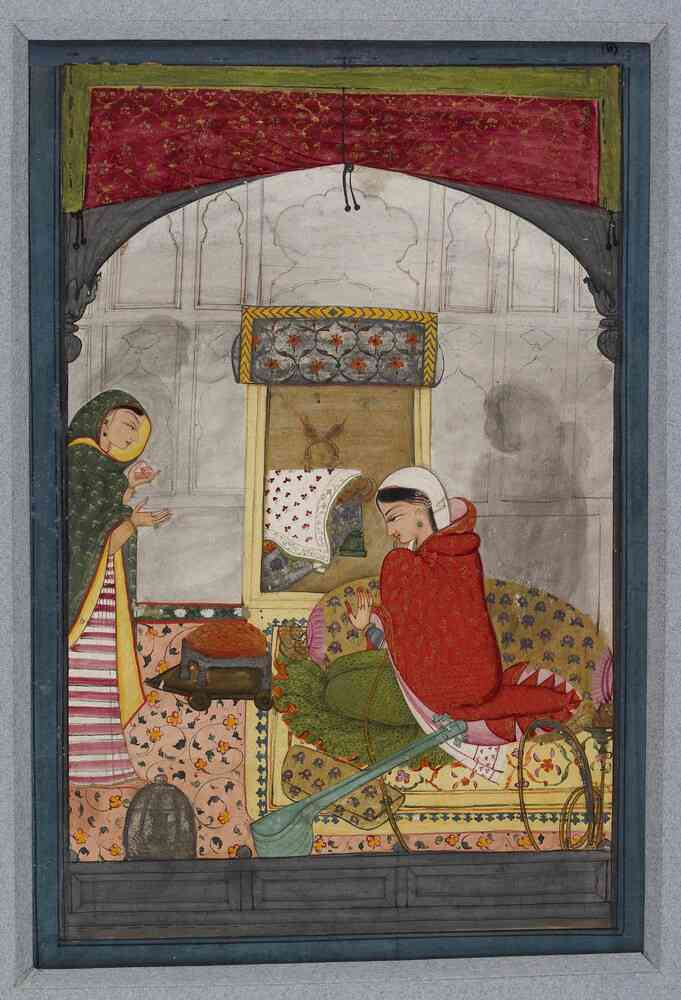
Kapuria mentions a British scholar-administrator in Punjab, Anne Wilson, whose 1904 book A Short Account of the Hindu System of Music offers a close insight into the universe of mirasi music – for instance, how mirasis used classical embellishments with ease without quite knowing the terminology. This included skills in producing the complex meend, gamak and quicksilver khatkas that they referred to colloquially as “machhi mar katan (bird swooping down on fish)”. Apart from Wilson, several colonial administrators, scholars and missionaries documented mirasi traditions. But as they did so, they couldn’t hide their revulsion for this exotic world: words like ugly, screaming, filthy, disreputable and rapacious are commonly used to vilify mirasis and courtesans in the excerpts of the chronicles that Kapuria cites in her book.
Attack of moralism
The last decades of the 19th century saw this traditional ecosystem under the combined attack of colonial and missionary moralism. More importantly, by then, an Anglicised new middle class was rising in Punjab, as it was elsewhere in India, which led the anti-nautch, reformation drive against the courtesan-mirasi culture. Kapuria writes about the socio-religious movements like the Arya Samaj and Deva Samaj that were pressing to have music cleansed of its old intermingled aesthetic. The ascetic-musician figure of VD Paluskar was a leading force in this drive to return this music to its purported pure past. Tellingly, despite his Maharashtrian roots, it was in Lahore that Paluskar found the ground ripest for his campaign.
Mirasis, dhadhis and courtesans did not fit this new puritanical worldview: several communities began banning nautch practices to ensure that the masculinity of the Punjabi stayed unblemished. For this, the reformers advocated two strategies, Kapuria observes: one, keep the hereditary performers out of the arts and, second, bring middle-class women and men into this music after scrubbing it of all eroticism.
Kapuria elaborates how traditional songs full of zesty, celebratory texts were replaced with new, pious and moral lyrics published in sermonising handbooks written by Arya Samaj updeshaks (preachers) like Mai Bhagvati, the author of Abala Mati Vegarodhik Sangit (Music to prevent impetuousness among women). So, Udi choli jard pase (her blouse tinted yellow) became Prabhu ji ne aagya ditti, tussi karm kariyo (God has ordered us to do good deeds).
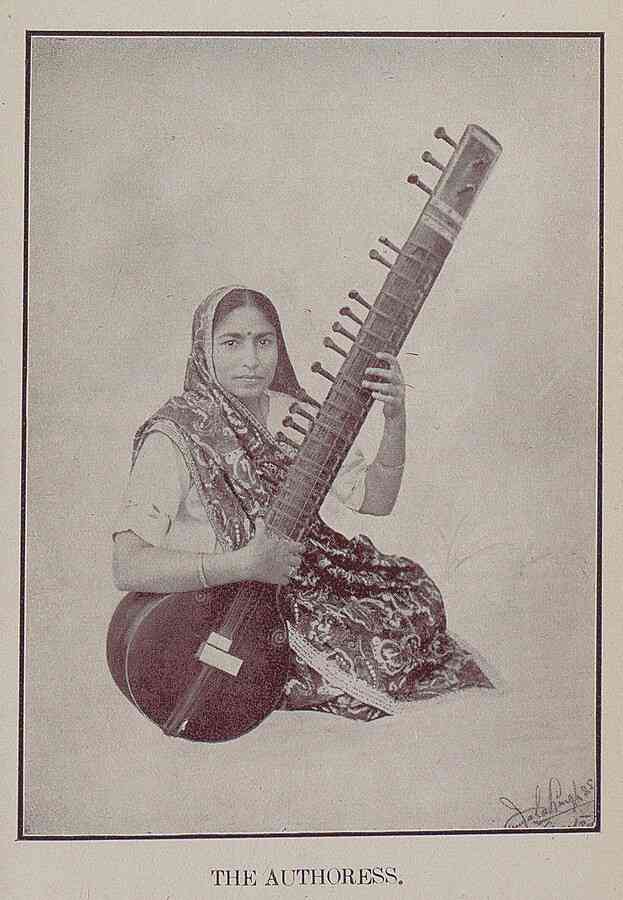
Among the most fascinating figures of these years was Devaki Sud, the first woman writer of a book on raga music in Punjabi, Sangit Prabha. A zealous reformer-singer, Sud spoke of wresting sacred raga vidya from mercenary musicians and restoring it to “good households”.
“The relative inclusivity evinced in the ubiquity of hereditary female performers, low caste musicians and listeners at festivals, gatherings and fairs (both sacred and secular) was overturned by a new exclusivity towards these groups…,” Kapuria says in her book.
A new hybridity
By the 1920s, even as it was squeezed out of traditional domains, Punjab’s classical music spread to new middle-class domains – it seeped into education pedagogy in its new chaste form and began finding audiences in urban music clubs and ticketed concerts. “The new practitioners distanced themselves from the communities that traditionally held the knowledge,” says Kapuria.
But the old order that upheld an entire tradition across centuries was far too resilient to simply lie down and die. “The level of opprobrium against courtesans amplified, but the reformation campaign was not entirely successful – traditions continued even in other contexts. Courtesans for instance took to new media like recorded music, films and stage.”
Not just that, in the princely states of Patiala and Kapurthala, which grew in strength after the fall of Lahore, connoisseurs and artists still put high value on the virtuosity of gharanedar ustads and courtesans. Kapuria refers in her book to this new “hybridity”, which included both the “older trajectories of sensuality” and the newly modernised music. It was in the decades leading to Partition that saw the rise of the dynamic Patiala gharana, marked by vigour and delicacy, a notable trait in the music of the legendary Bade Ghulam Ali Khan.
Kapuria points to an interesting fact: younger musicians who lay claim to the mirasi tradition are now reclaiming their identity after decades of marginalisation. On their website, the hugely popular Nooran sisters of Jalandhar describe themselves as followers of both the classical Sham Chaurasi gharana of Punjab as well as the mirasi tradition.
Malini Nair is a writer and senior editor based in New Delhi. She is a Kalpalata Fellow for Classical Music Writings for 2022.
This article first appeared on Scroll.in.




